Strange Horse Behaviors That Will Blow Your Mind
Horses display a fascinating range of behaviors that reflect their instincts, emotions, and physical needs. From cribbing and weaving to yawning and head shaking, each behavior offers insights into their well-being. Understanding these actions helps improve their care and enrich their lives.
Cribbing
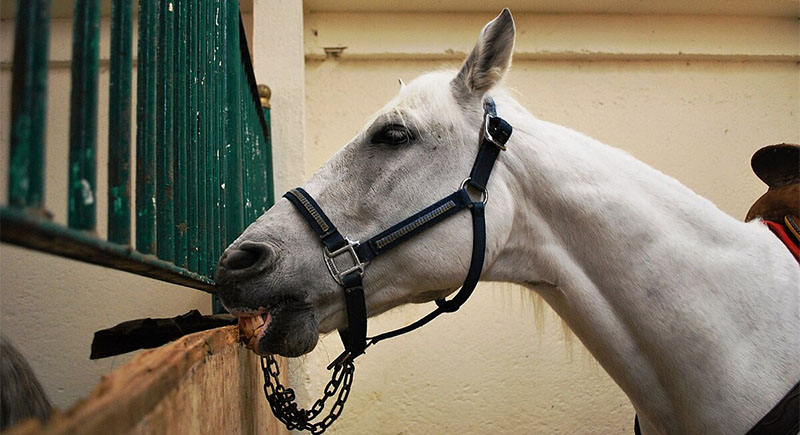
Credit: Wikimedia Commons
Horses can develop a habit called cribbing, where they bite on objects and gulp air. It’s an action that ignites endorphin release, giving them a natural high. Horses use it as a response to stress or boredom. This behavior can damage their teeth and cause them to stall. It’s fascinating yet concerning.
Weaving
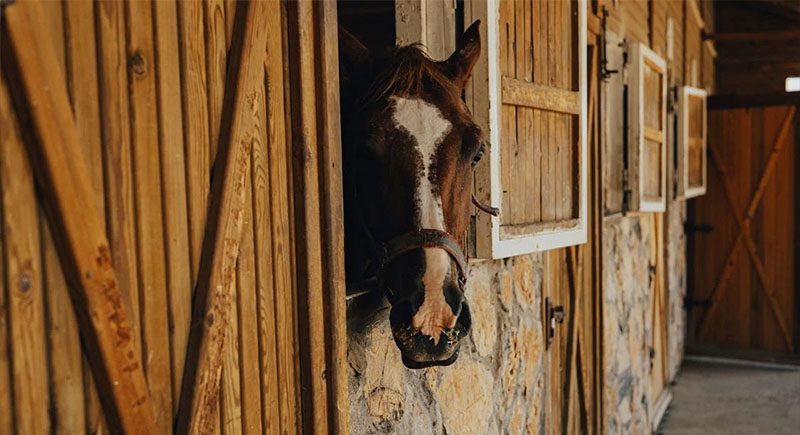
Credit: pexels
This is a behavior in which horses sway side to side, often due to stress or confinement. This repetitive motion helps them release pent-up energy and anxiety. Even though it can wear out their hooves and joints, it’s their way of coping with boredom or nervousness in stables.
Flehmen Response
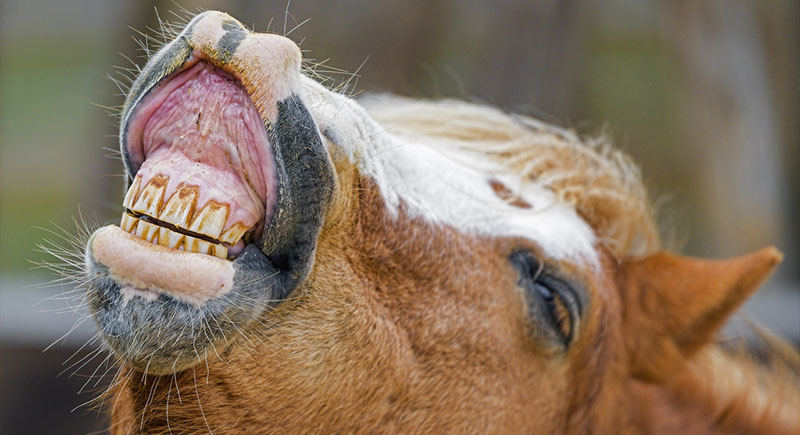
Credit: flickr
The Flehmen response occurs when horses curl their upper lip and inhale. This unconventional display is used to help the animal detect scents, especially pheromones, better. It aids in identifying mates, foods, and other horses’ statuses. It’s a fascinating and practical part of their social interactions.
Yawning
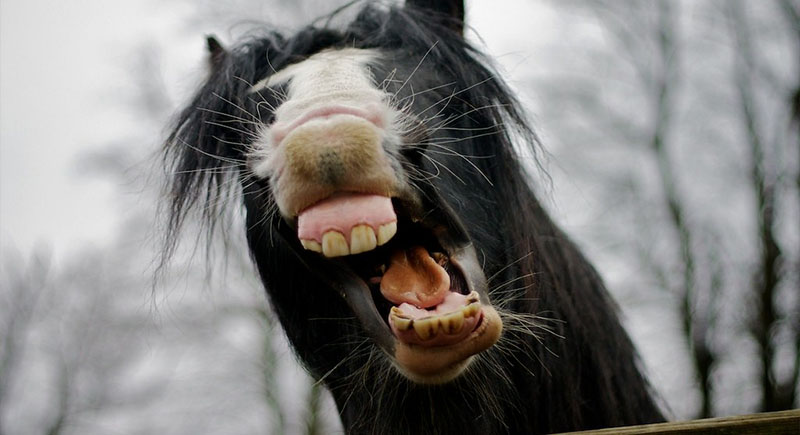
Credit: flickr
Yawning in horses isn’t just about sleepiness. The behavior indicates that the horse is relaxed or relieved of stress. Sometimes, it follows a period of tension or physical exertion. You should be observant of the hose to see when they are comfortable or transitioning from stress to a calmer state.
Wood Chewing

Credit: flickr
Wood chewing, or “wood chewing,” involves horses gnawing on wood, usually as a result of being bored or showing nutrient deficiency. This behavior will damage your fences and stalls and pose health risks. Providing sufficient forage and enrichment activities can help reduce this destructive habit.
Head Shaking

Credit: iStockphoto
Horses shake their heads to alleviate irritation from insects, discomfort, or even allergies. Sometimes, this behavior is associated with a condition called headshaking syndrome, causing sudden, uncontrollable shaking. It’s crucial to identify the exact cause and manage it appropriately for the horse’s well-being.
Pawing
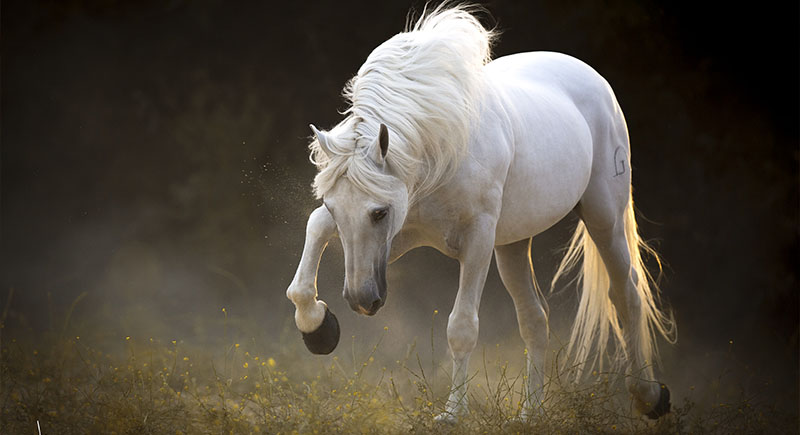
Credit: Wikimedia Commons
Pawing is when horses scrape the ground with their hooves, often indicating impatience, anxiety, or frustration. They can also be doing this because they need to uncover food or water. You should, therefore, monitor this behavior since it can lead to excessive wear on their hooves and other health issues.
Rolling
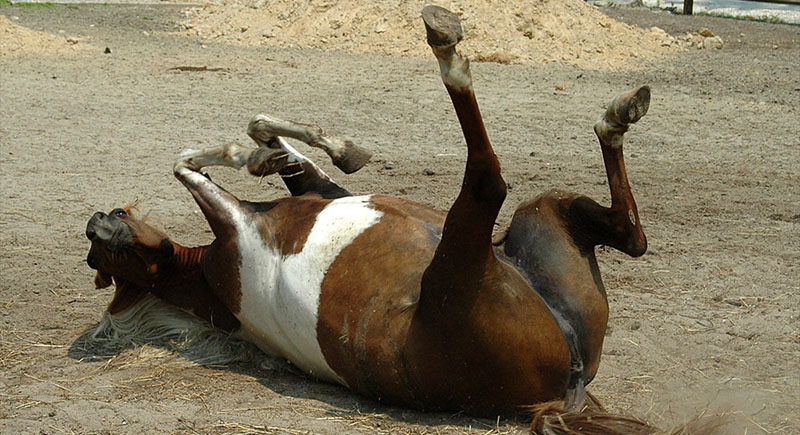
Credit: flickr
Rolling is a common behavior in which horses lie down and roll on their backs. It’s always indicative of happiness, comfort, or a way to scratch an itch. However, excessive rolling might suggest that the horse is uncomfortable or colicos, requiring attention to ensure the horse’s health.
Nipping and Biting

Credit: flickr
Nipping and biting is a horse behavior that comes from playfulness, frustration, or a need for attention. While light nipping can be harmless, consistent biting indicates a need for better training and handling. It’s essential that you identify the specific motivation to effectively address and manage this behavior.
Lip Flapping

Credit: flickr
This is a behavior in which horses move their lips rapidly. It often signals playfulness, curiosity, or nervousness. The animals do this during feeding or grooming. While usually harmless in most cases, persistent lip flapping may require you to investigate more to rule out underlying dental or health issues.
Standing with One Leg Resting
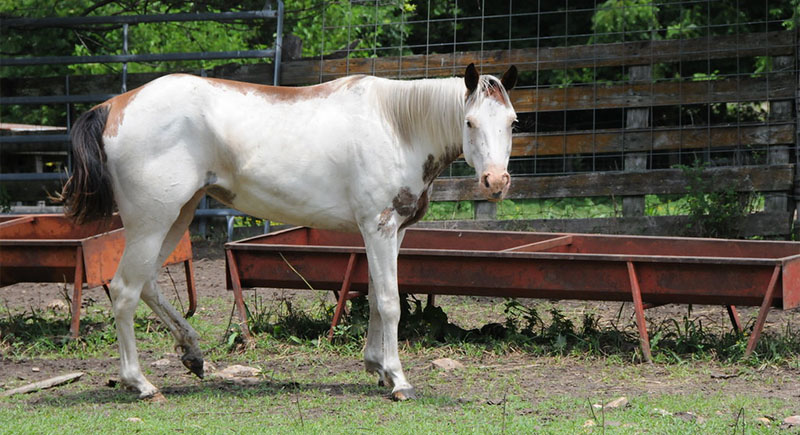
Credit: flickr
When horses stand with one leg resting, it’s a sign of relaxation and comfort. This behavior will tell you that your animal is feeling safe and is conserving energy. However, consistently favoring one leg might indicate pain or lameness. This may require further investigation to safeguard their health.
Groaning or Grunting
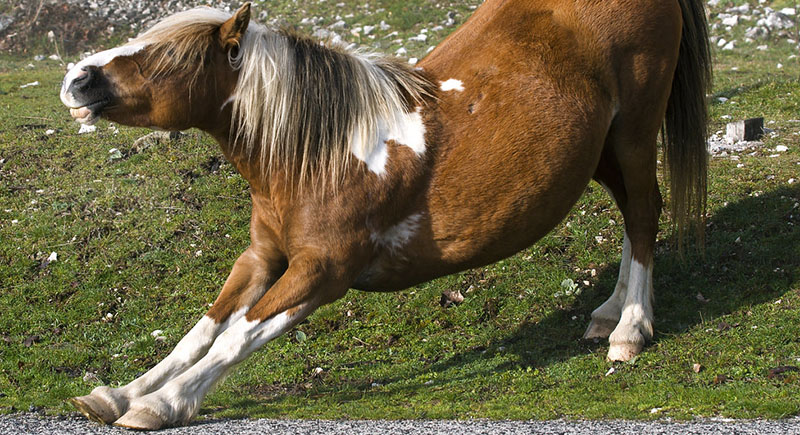
Credit: flickr
Groaning or grunting sounds from horses can occur during stretching, lying down, or physical exertion. These sounds usually suggest a relaxed feeling. However, when the animal does this excessively, it can show discomfort or pain, warranting a closer look to ensure the horse’s well-being.